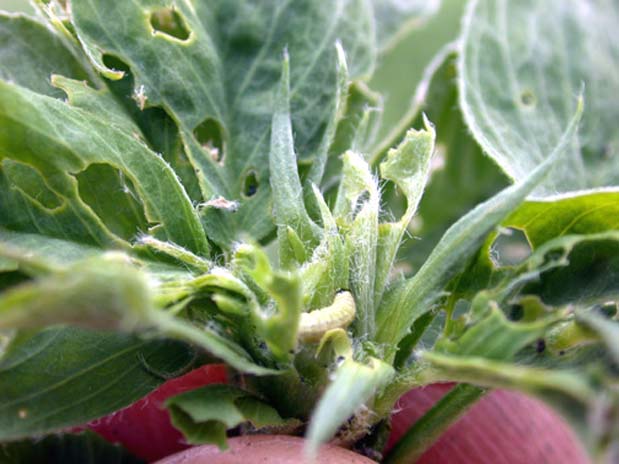

|
|
Alfalfa Weevil damage
(John Obermeyer, Purdue University) |
|
Common Name: Alfalfa Weevil - damage
See also: adult | larva Scientific Name: Curculionidae: Hypera postica Status: key insect pest of alfalfa Damaging Stage: mostly larval; occasionally adult Injury: Alfalfa weevil larvae are important pests of alfalfa because they stunt the growth of alfalfa plants and significantly reduce harvest potential. In late spring, the eggs hatch and the larvae begin to feed. For the first few days, the larvae feed within the stem but then move to the leaf buds at the tips of the stems. Here their feeding causes significant defoliation and stunting of the plant growth. As time progresses, their feeding gives the leaves a skeletonized appearance. Action Threshold: The key to economical management of alfalfa weevil is combining crop management practices, biological control, and the use of insecticides when weevil numbers are high enough to ensure that yield benefits outweigh treatment costs. Before the first cutting, the threshold is generally 35-40 percent of plants with feeding damage. After the first cutting, the action threshold is eight or more larvae per square foot or where larval feeding is suppressing regrowth. Management: Management of alfalfa weevil can be accomplished by monitoring closely. Decisions about insecticide applications must be made in relation to the population of weevils, growth of the plant, and expected time of cutting. |